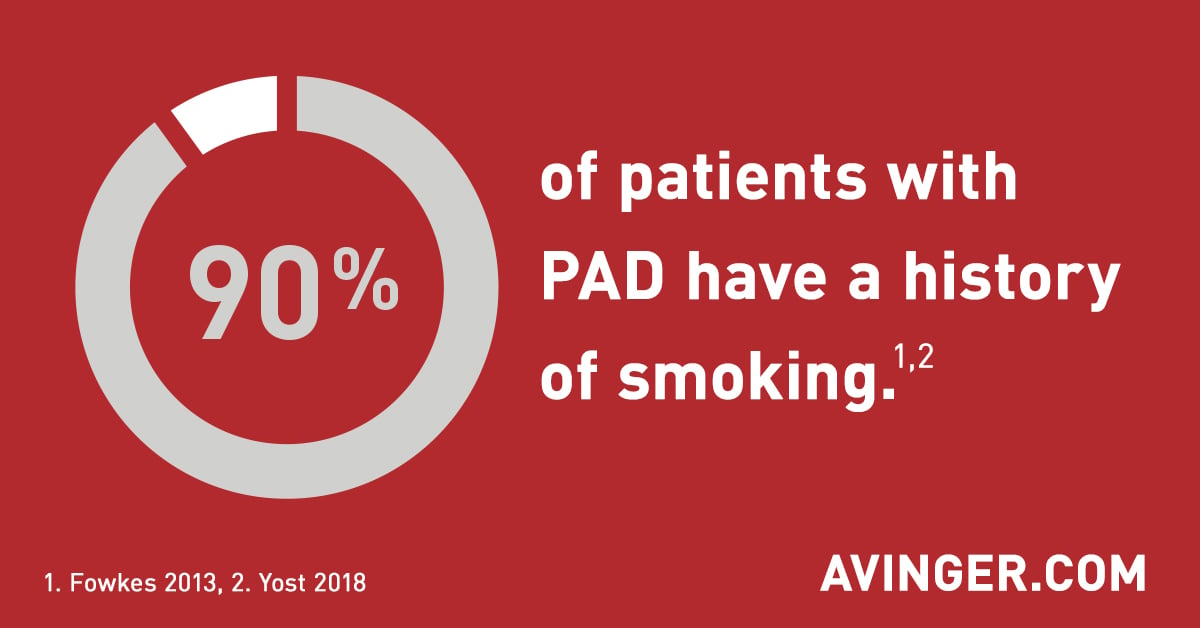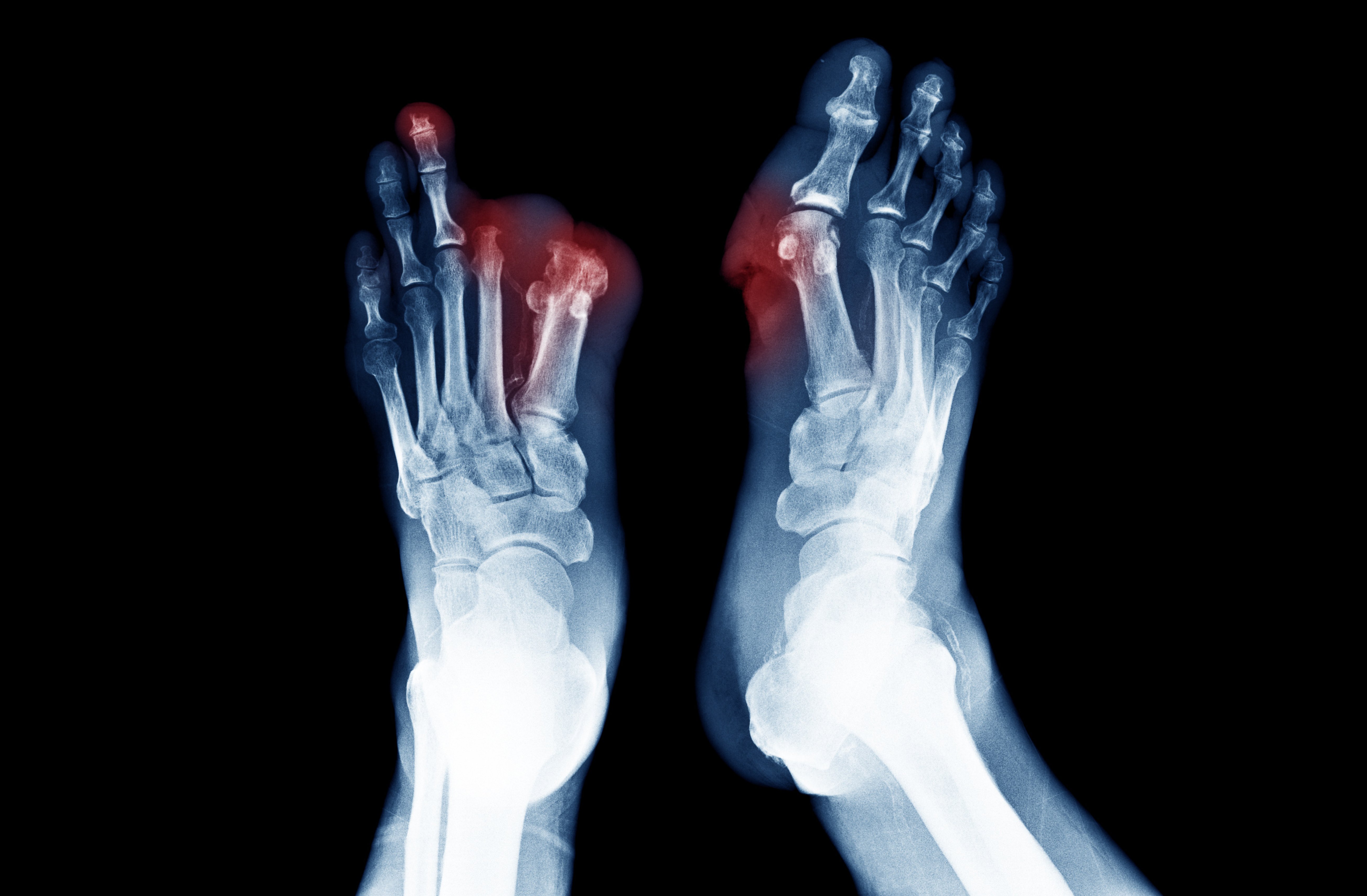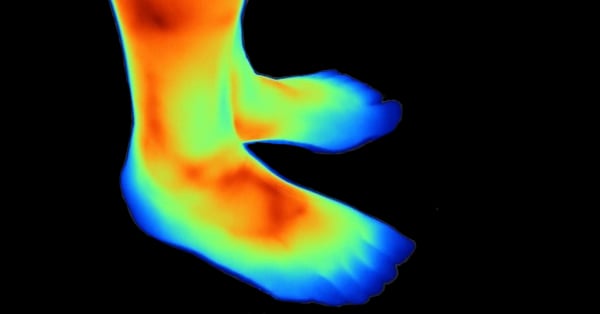Topics: Peripheral Artery Disease, Smoking

Smokers find themselves with an increased risk of Peripheral Artery Disease (PAD). If you are a current or ex-smoker here are nine fast facts you should know about smoking and Peripheral Artery Disease.
- Smoking is the only avoidable risk factor of Peripheral Artery Disease.1,2
- About 90% of patients with PAD have a history of smoking.3-5
- Smoking significantly increases the risk of developing PAD, even more than having coronary artery disease.6
- The toxins found in cigarette smoke cause damage along different biochemical pathways, and together, these injuries can contribute to the worsening of PAD.6
- Quitting smoking increases the long-term survival rate in patients with PAD. In one study, the 10-year survival rate was 82% in ex-smokers compared with 46% in current smokers.7
- In addition to increased survival rate, some studies have suggested that symptoms of peripheral artery disease improve after a smoker quits.6
- Smoking is a major risk factor for critical leg ischemia, the worst form of PAD.6
- Smoking cigarettes is associated with a significant increased risk for atherosclerosis and 70–90% of patients with chronic limb ischemia currently smoke or are ex-smokers.8-10
- Amputations are more common in patients who have been heavy smokers.11
Conclusion:
Smoking significantly increases the risk of developing Peripheral Artery Disease. If you are a current or ex-smoker experiencing symptoms of PAD, there are options available to you for removing plaque from your arteries and restoring blood flow. Lumivascular atherectomy represents one such option that allows your doctor to see inside your artery and safely remove the plaque and return blood flow to your legs and feet.
Take Action:
Find a Lumivascular physician in your area
Learn more about Lumivascular atherectomy

If you have found this article helpful, please don’t forget to share
References:
- Kannel, et al. Update on some epidemiologic features of intermittent claudication: the Framingham Study. J Am Geriatr Soc. 1985;33(1):13-18
- Surgeon General. The Health Consequences of Smoking: Cardiovascular Disease. Rockville, MD: US Dept. of Health and Human Service;1983.
- Juergens, et al. Arteriosclerosis obliterans: review of 520 cases with special reference to pathogenic and prognostic factors. Circulation. 1960;21:188–195.
- Lord JW. Cigarette smoking and peripheral atherosclerotic occlusive disease. J Am Med Assoc. 1965;191:249–251.
- Faulkner, et al. The effect of cessation of smoking on the accumulative survival rates of patients with symptomatic peripheral vascular disease. Med J Aust. 1983;1:217–219.
- Lu, et al. The Relationship of Cigarette Smoking to Peripheral Arterial Disease. Rev Cardiovasc Med. 2004;5(4):189-193
- Jonason, et al. Cessation of smoking in patients with intermittent claudication. Effects on the risk of peripheral vascular complications, myocardial infarction and mortality. Acta Med Scand. 1987;221:253–260.
- Kannel, et al. Update on some epidemiological feature of intermittent claudication: the Framingham Study. J Am Ger Soc. 1985 Jan;33(1):13–8.
- Kannel, et al. Latest perspectives on cigarette smoking and cardiovascular disease: the Framingham study. J Card Rehabil. 1984;4:267–77.
- Vogt MT, Cauley JA, Kuller LH, Hulley SB. Prevalence and correlates of lower extremity arterial disease in elderly women. Am J Epidemiol. 1993 Mar 1;137:559–68.
- Jensen et al. The Prevalence of Chronic Critical Lower Limb Ischaemia in a Population of 20,000 Subjects 40–69 Years of Age. Eur J Vasc Endovasc Surg. 2006 Jul;32(1):60-5.







